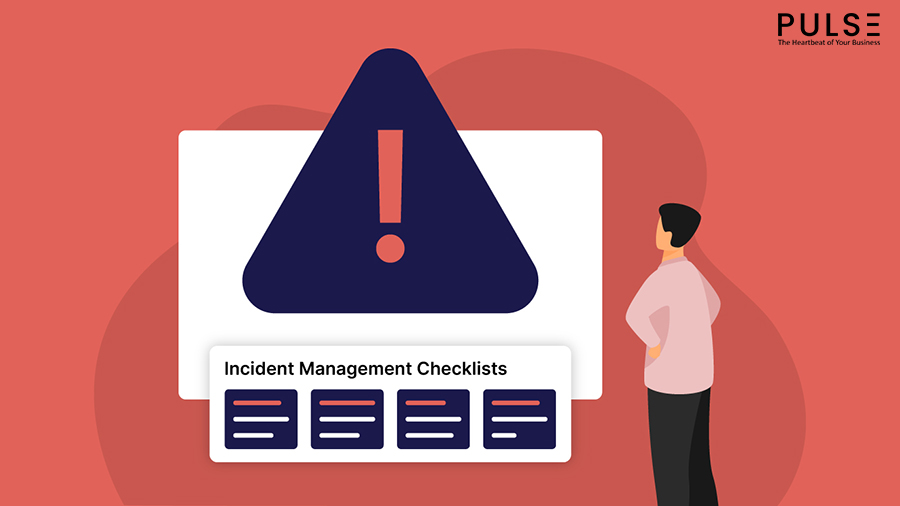A five-hour computer outage cost Delta Airlines $150 million in 2017. Similarly, companies lose an average of $300,000 per hour in revenue, staff productivity, and maintenance costs due to system outages.
Major disruptions can significantly outweigh such expenses. The reason behind this is simple: customers who are unable to pay their bills, participate in a video conference or purchase a plane ticket are eager to switch to a competitor.
Moreover, such incidents can disrupt the organization’s processes and make them highly critical to its future. Therefore, incident management is vital to ensure smooth business operations and to avoid such incidents in the future.
What Exactly is Incident Management?
Businesses use dozens of technological packages in the forms of software and hardware to increase productivity. But like other systems, these IT systems too are vulnerable to breakdowns and stutters or can malfunction from time to time.
One incident could be all it takes to break your business practices, and it can throw your entire organization in flux. This is mainly because the incident occurs out of nowhere, and no one is prepared for it.
Incident management refers to a certain set of IT practices and preparations that your team or organization would carry out to measure KPI (Key Performance Indicators) and detect and solve problems or an “incident” in the business.
Incident management ensures that your IT team can resolve technical malfunctions at the earliest, to reduce damage and even your reputation in the long run. For instance, you don’t want your website to stop running amidst a big sale, for it may repel customers indefinitely.
Benefits of Incident Management

A good incident management software will give KPIs to help the concerned team dramatically reduce incident response time.
However, it must be noted that KPIs themselves will not solve your problems. Still, they will assist you in identifying the source of the problem and directing your efforts toward digging more profound in the appropriate areas.
Here are some benefits of incident management:
- Deriving vital KPIs for current and future use.
- Prevention of incidents and risks.
- Reduction and elimination of downtime.
- Securing confidential data.
- Improving customer service.
- Better efficiency by identifying areas of improvement.
- Mitigating spontaneous labor and costs.
How Can a Digital Checklist Help?
Manually conducting safety auditing, inspection management, and meeting compliance standards can be tedious.
But harnessing digital checklists, businesses can streamline incident management and make it more accessible.
All industries have a unique set of challenges they face during operations. Digital checklists simplify these processes, making it much easier to tackle challenges while maintaining an organized workplace.
Digital checklists can prove your team with some critical KPIs like timestamps, uptime, SLOs (Service Level Objectives), SLAs (Service Level Agreements), MTTR (mean time to repair, resolve, respond, or recovery), On-call time, MTTD (mean time to detect), and MTTA (mean time to acknowledge).
Furthermore, you can use digital checklists for incident management to do the following:
- Log all incidents.
- Determine the location and sensitivity of the incident at hand.
- Isolate the incident to ensure it doesn’t affect other resources.
- Identify regulatory measures for the incident.
- Assign duties throughout your team according to various factors for faster issue resolution. This can be done according to the category, location, and effectiveness.
- Eradicate malfunctioned or compromised data.
- Develop a list for forensics and hardware replacement if needed.
- Analyze data to study why the problem arose and how you can avoid recurrence in the future.
- Create an incident report that logs which areas of the organization were most affected.
- Track and monitor all incidents to ensure accountability as well as faster resolution of incidents.
- Improve security measures.
As you can see, digital checklists can be beneficial in the case of incident management.
How Can Pulse Help?
Pulse is an iAuditor alternative that helps you create digital checklists and carry out vital functions that support your organization to run smoothly and effectively.
Pulse provides businesses with KPIs or Key Performace Indicators for incident management to identify and diagnose problems with processes and systems, provide benchmarks and realistic targets for the team to work toward, and serve as a springboard for more extensive inquiries.
Additionally, Pulse has a user-friendly mobile app that operates offline, gathering data for you to inspect and analyze easily. A simple dashboard displays real-time results that are easy to gauge.
Pulse is easy to use and super practical. Revolutionize your business practices, meet standard compliances, and rise to the top. You can now sign up for your free 30-day trial of Pulse today.
